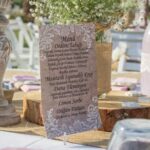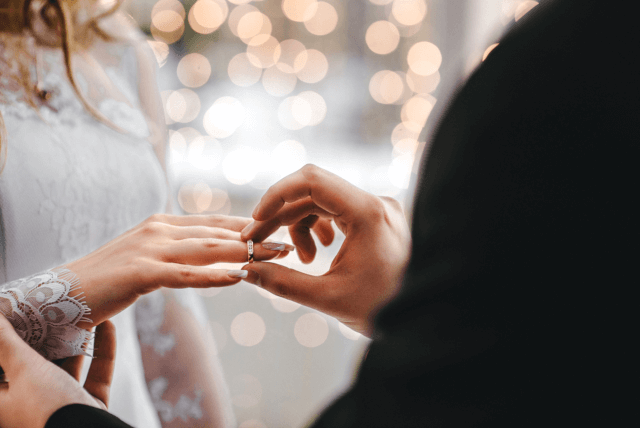How do wedding rings work? Wedding rings have been a symbol of love and commitment for centuries, but have you ever wondered about their history and significance? In this article, we will delve into the origins and evolution of the tradition of exchanging wedding rings. From ancient customs to modern trends, we will explore how wedding rings have become an enduring symbol of marriage.
The history of wedding rings is a fascinating journey that spans across different cultures and time periods. By understanding the roots of this tradition, we can gain a deeper appreciation for the symbolism behind these timeless pieces of jewelry. From ancient Egypt to medieval Europe, the exchange of wedding rings has played a significant role in matrimonial rituals. Join us as we uncover the historical significance of this age-old tradition and its evolution over time.
As we trace the historical timeline of wedding rings, we will also explore the symbolic meaning behind their circular shape, precious metal, and placement on the ring finger. These elements hold deep significance in various cultural contexts and have become universal symbols of everlasting love and devotion. Join us as we unravel the rich symbolism that surrounds the tradition of exchanging wedding rings, shedding light on their profound emotional and spiritual significance.
Symbolism of Wedding Rings
Wedding rings hold a deep symbolic meaning that goes beyond being a mere piece of jewelry. The circular shape of the wedding ring represents eternity, with no beginning or end, signifying the everlasting love and commitment between two individuals. This timeless symbol transcends cultural and religious boundaries, serving as a universal representation of unity and devotion in marriage.
The precious metal used for wedding rings also carries significant symbolism. For example, gold is a popular choice for its association with wealth and prosperity, as well as its resistance to corrosion and tarnish – making it a fitting symbol for an enduring marriage. On the other hand, platinum is known for its rarity and durability, reflecting the unique and resilient bond shared by the couple.
Silver, with its lustrous shine, embodies purity and clarity in love. Each metal holds its own distinct symbolism but ultimately serves as a tangible representation of the couple’s enduring commitment to one another.
While this anatomical claim has been debunked by modern science, the romantic essence behind wearing the ring on this particular finger remains cherished by many couples today. Overall, understanding the deep symbolism behind wedding rings enriches the experience of exchanging these meaningful tokens of love during matrimonial vows.
The Ring Finger
The tradition of wearing wedding rings on the fourth finger of the left hand dates back to ancient times and is rooted in both culture and mythology. The ancient Romans believed that there was a vein running directly from the fourth finger of the left hand to the heart, known as the “vena amoris” or the vein of love.
This romantic notion contributed to the widespread belief that wearing a wedding ring on this finger symbolizes a direct connection to the heart, representing love and commitment in marriage.
In addition to the romantic symbolism, different cultures also have their own unique traditions regarding which hand and finger a wedding ring should be worn. For example, in some Eastern European countries, it is customary for women to wear their wedding rings on the right hand.
In contrast, in Western cultures, particularly in North America and Europe, wearing wedding rings on the left hand is more common. These variations highlight the diverse cultural significance and customs associated with wedding rings around the world.
Despite these cultural differences, the symbolism of wearing a wedding ring on the fourth finger of the left hand remains consistent across many societies. This tradition serves as a tangible representation of love, fidelity, and commitment between spouses. Regardless of individual beliefs or customs, this universal practice has stood the test of time as an enduring symbol of matrimony and devotion.
So how do wedding rings work to communicate such profound sentiments? They do so through their placement on a specific finger steeped in history and symbolism, carrying with them centuries worth of meaning derived from cultural customs and beliefs.
Types of Wedding Rings
Wedding rings come in various styles, materials, and designs, allowing couples to choose a ring that reflects their personal taste and preferences. Here are some of the most common types of wedding rings:
1. Classic Bands: Classic wedding bands are timeless and traditional, often made of gold or platinum with a simple, smooth design. These rings are popular for their understated elegance and versatility, making them suitable for everyday wear.
2. Diamond Rings: For those seeking a touch of luxury and sparkle, diamond wedding rings are a popular choice. These rings feature one or more diamonds set into the band, adding a glamorous touch to the traditional wedding ring.
3. Vintage-Inspired Rings: Vintage-style wedding rings often incorporate intricate details such as filigree, milgrain edging, or colorful gemstones reminiscent of eras gone by. These rings appeal to couples who appreciate romantic and nostalgic elements in their jewelry.
4. Alternative Metals: In recent years, alternative metals such as titanium, tungsten, or cobalt have gained popularity for their durability and modern look. These non-traditional materials offer unique options for couples looking for something different.
5. Custom Designs: Many couples opt for custom-designed wedding rings to create a unique symbol of their love and commitment. From personalized engravings to bespoke shapes and patterns, custom-designed rings allow for endless creativity and individuality.
When selecting a wedding ring style, it’s essential to consider factors such as lifestyle, personal style preferences, and budget constraints. Exploring different types of wedding rings can help couples find the perfect symbol that resonates with them for years to come.
Customizing Wedding Rings
When it comes to customizing wedding rings, couples have the option to work with a jewelry designer or choose from a selection of customizable designs offered by reputable jewelers. Working with a designer allows for a fully personalized experience, where every aspect of the ring can be tailored to the couple’s preferences.
This may include selecting specific metals such as gold, platinum, or rose gold, choosing gemstones such as diamonds, sapphires, or birthstones, and deciding on details like band width, texture, and finish.
In addition to materials and design elements, customization also extends to engravings and inscriptions. Many couples choose to engrave meaningful dates, initials, or romantic phrases inside their wedding bands as a special touch. From classic and timeless designs to modern and unconventional styles, customizing wedding rings offers couples the opportunity to create one-of-a-kind pieces that truly embody their love and commitment.
| Customization Options | Examples |
|---|---|
| Metal | Gold (yellow/white/rose), Platinum |
| Gemstones | Diamonds, Sapphires |
| Engravings | Initials, Dates |
Ring Shopping Guide
Choosing the perfect wedding rings can be an exciting yet daunting task for many couples. From budgeting to sizing, there are several important factors to consider when navigating through the process of selecting the ideal rings to symbolize their love and commitment. Here are some essential tips and advice for couples on how to choose the perfect wedding rings.
First and foremost, establishing a budget is crucial when shopping for wedding rings. It’s important to have an idea of how much you are willing to spend before beginning the search. The budget will help narrow down the options and prevent overspending. Keep in mind that wedding ring prices vary depending on factors such as metal type, design intricacy, and gemstone presence if applicable.
In addition to budgeting, sizing is another critical aspect of choosing wedding rings. It’s vital for couples to get their ring sizes accurately measured before making a purchase. Ill-fitting rings can be uncomfortable and may lead to issues in the future. Most jewelry stores offer ring sizing services, so it’s recommended for both partners to get sized during the shopping process.
When it comes to shopping considerations, it’s essential for couples to explore various options before making a final decision. Research different jewelry stores, designers, and online retailers to compare quality, pricing, and customer service. Additionally, consider the overall style preference – whether it’s classic, vintage-inspired, modern or custom-designed.
| Aspect | Description |
|---|---|
| Budgeting | Establish a clear budget before starting the search |
| Sizing | Get accurate measurements of ring sizes for both partners |
| Shopping Considerations | Explore various options including quality, pricing, and styles from different sources |
Caring for Wedding Rings
When it comes to caring for wedding rings, proper maintenance and cleaning are essential to ensure that these precious symbols of love remain in pristine condition for years to come. Here are some practical tips on how to clean, maintain, and protect wedding rings:
- Regular Cleaning: It’s important to clean your wedding ring regularly to remove built-up dirt, oils, and debris. For most metal bands, a simple solution of mild dish soap and warm water can be used to gently scrub away any grime. For more delicate or intricate designs, consider using a soft-bristled brush or toothbrush to reach all the nooks and crannies.
- Professional Maintenance: In addition to regular DIY cleaning, it’s a good idea to have your wedding ring professionally inspected and maintained at least once a year. Jewelers can check for loose stones, inspect prongs or settings, and perform any necessary repairs or adjustments to keep your ring in top condition.
- Protective Storage: When not wearing your wedding ring, store it in a safe place such as a jewelry box or pouch specifically designed for storing precious metals. This helps protect the ring from scratches, dings, or other damage that can occur when left out in the open.
By following these simple care tips, couples can keep their wedding rings looking beautiful and shining bright for a lifetime. Taking the time to clean, maintain, and protect these cherished symbols of commitment is well worth the effort in preserving their longevity.
The Future of Wedding Rings
In conclusion, wedding rings have a rich history and deep symbolism that has evolved over time, reflecting the values and traditions of different cultures. From the significance of wearing the ring on the fourth finger of the left hand to the symbolic meaning behind the circular shape and precious metal, wedding rings hold a special place in the hearts of couples around the world.
As couples continue to seek unique ways to express their love and commitment, customizing wedding rings has become increasingly popular, allowing them to showcase their individual style and preferences.
With an array of styles, materials, and designs available, couples have an abundance of options when it comes to choosing the perfect wedding rings. However, as technology continues to advance, so does the future of wedding rings.
From sustainable materials such as lab-grown diamonds and recycled metals to technological innovations like smart rings that can track fitness or make payments, there is a shift towards more eco-friendly and functional options. These emerging trends not only offer creative solutions for couples but also contribute to a more conscious approach to consumerism.
As we look ahead, it is clear that wedding rings will continue to be a timeless symbol of love and commitment. Whether it’s through traditional bands or cutting-edge designs, the essence of what makes a wedding ring meaningful remains unchanged. The future holds endless possibilities for how wedding rings work in our lives – from sustainability and technology to personalization and innovation – as they continue to signify one of life’s most cherished milestones.

Welcome to my blog about home and family. This blog is a place where I will share my thoughts, ideas, and experiences related to these important topics. I am a stay-at-home mom with two young children. I hope you enjoy reading it! and may find some helpful tips and ideas that will make your home and family life even better!





